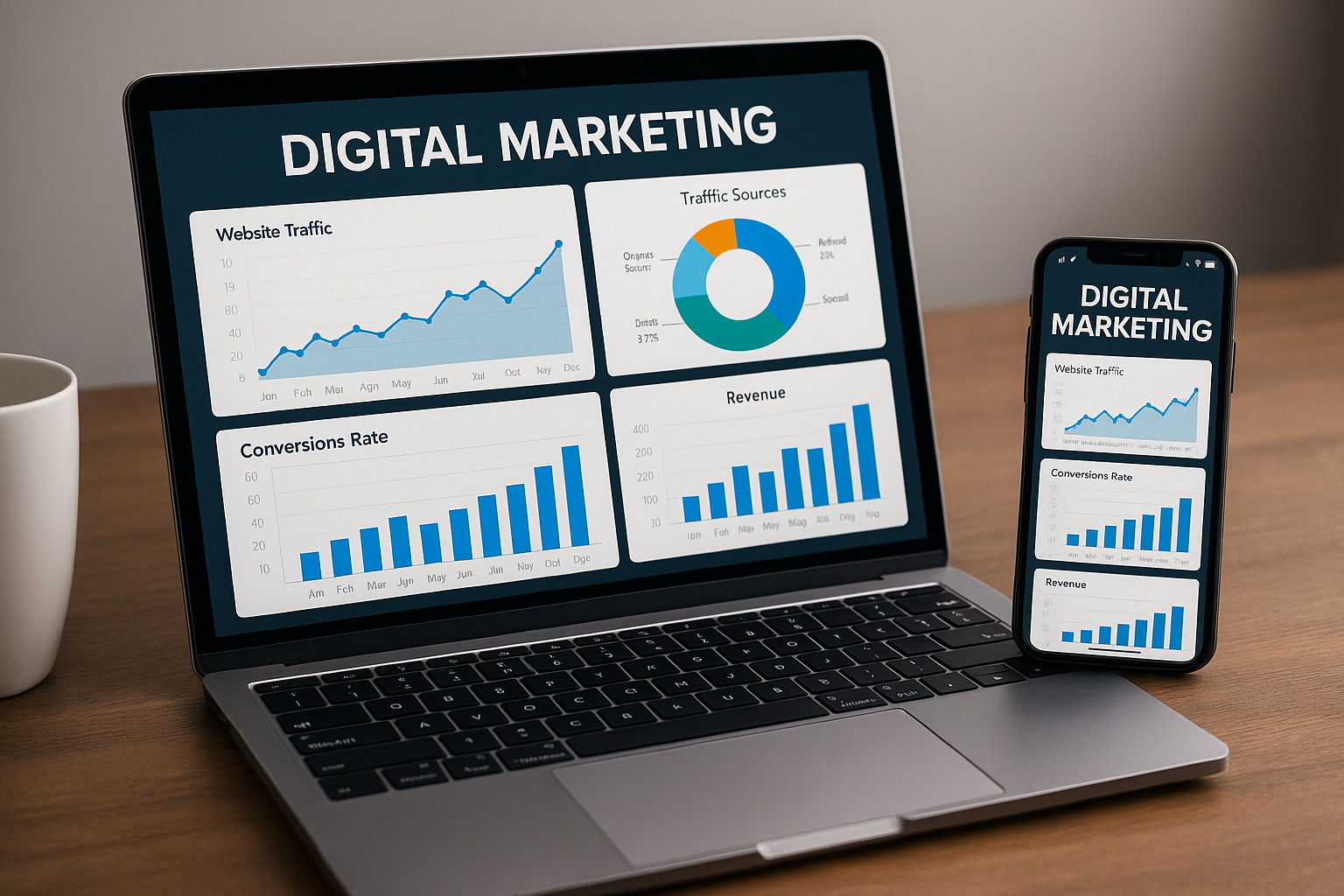Online Marketing 101: How to Market Your Business Online





The Importance of Online Marketing
Online marketing matters because consumers make decisions based on what they see, read, and experience online. When your business is visible in search results, social feeds, and ads, you win attention and trust. Effective online marketing expands reach, lowers customer acquisition costs, and turns casual visitors into repeat buyers.
In this guide, you’ll learn the core types of online marketing and practical steps to build a marketing strategy that works for U.S. businesses, including tips for beginners and teams looking to scale.
Understanding Core Concepts: What Online Marketing Is and Isn’t
Online marketing covers everything from organic search and social media to paid campaigns and email automation. It includes digital advertising, content creation, user experience, analytics, and a marketing mix that supports a cohesive customer journey. It is not only about running ads; it’s about creating an integrated experience that converts.
For clear definitions and beginner-friendly terms, see our glossary at Marketing Terms for Beginners.
How to Build a Strong Online Presence
Optimize Your Website
Your site must load fast, communicate value clearly, and be mobile-friendly. Good structure improves SEO and supports conversion. Consider user experience on every page, from homepage to product pages.
Claim and Optimize Local Listings
For local businesses, optimizing Google Business Profile and map listings increases discoverability and drives phone calls. Encouraging reviews improves trust and local rankings.
Set Up Tracking
Install analytics tools and tracking pixels to measure performance. Use Google Analytics, UTM links, and conversion tracking to see which channels deliver results.
Content, Channels, and the Marketing Mix
Content fuels discovery and builds authority. Choose formats that match your audience: blogs, videos, email sequences, and short social clips. Balance paid and organic channels to maximize reach and ROI.
Content That Attracts and Converts
Create helpful content answering customer questions, such as how to build a marketing strategy, product tutorials, and buying guides. Educational content performs well for beginners and nurtures prospects through the journey.
Social Media and Community
Social platforms shape opinions. Use short videos, stories, and community posts to build relationships. For platform best practices, check insights at Hootsuite.
Paid Media and Digital Advertising
Paid campaigns accelerate visibility. Use search ads for demand capture and social ads for awareness and retargeting. Stay updated with online advertising trends. For guidance, see Neil Patel and merchant tools at Shopify.
Step-by-Step: How to Build a Marketing Strategy
- Define Clear Goals
Set measurable KPIs like monthly leads, conversion rate, or average order value. - Research Your Audience and Competitors
Create buyer personas, map their journey, and audit competitors to spot gaps. - Prioritize Channels
Start with 2–3 channels that best reach your audience, considering cost and bandwidth. - Build a Content Roadmap
Plan 90 days of content for awareness, consideration, and conversion. Repurpose assets to multiply impact. - Launch, Test, and Optimize
Run small experiments for paid ads and landing pages. Measure results, iterate, and scale. Regular audits help align efforts.
Practical Tactics for Beginners
- Start with SEO basics and local search optimization
- Publish one long-form article every two weeks and share on social channels
- Run a small retargeting campaign to capture interested visitors
- Build an email sequence to nurture leads after they download a resource
Advanced Themes: UX, Sustainability, and Trends
Digital marketing and user experience are inseparable. Fast pages, clear CTAs, and intuitive navigation increase conversions and reduce ad costs.
Consider sustainable practices: optimize asset sizes, reduce unnecessary tracking scripts, and prioritize evergreen content. Stay current with trends like AI-assisted creative, privacy-first measurement, and cross-channel automation.
Measuring Success: Metrics That Matter
Track metrics tied to business goals, not vanity numbers:
- Traffic quality, not just volume
- Conversion rates by channel and landing page
- Cost per acquisition and return on ad spend (ROAS) for paid campaigns
- Customer lifetime value for long-term ROI
Use dashboards to visualize performance and run monthly reviews to adapt your strategy.
Real-World Examples
Use Case 1: Local Service Business
A home services company combined local SEO, Google Business Profile posts, and targeted search ads to increase inbound calls by 40% in three months.
Use Case 2: E-Commerce Brand
A boutique used social ads, product videos, and optimized product descriptions to halve cost per purchase and double monthly revenue.
Use Case 3: B2B Provider
A consulting firm used LinkedIn content, gated whitepapers, and email nurturing to shorten the sales cycle and generate higher-quality leads.
See agency examples at Express Media Services and portfolio outcomes at Express Media Work.
Tips and Best Practices
- Prioritize value-driven content over constant selling
- Optimize everything for mobile first
- Track everything and iterate based on data
- Keep messaging consistent across channels
- Invest in long-term SEO and brand assets
Final Thoughts
Online marketing is both art and science. Start with clear goals, choose the right channels, and create content that helps people. Keep user experience central and measure what matters. Consistency will grow visibility, improve conversions, and build a sustainable competitive advantage.
Frequently Asked Questions
Is online marketing effective for small businesses in the US?
Yes. Small businesses can compete using targeted SEO, local listings, and focused paid campaigns.
How long does it take to see results?
Paid ads show results in days, while SEO and content strategies take 60–90 days for consistent growth.
What is the most cost-effective method?
Content marketing and SEO deliver long-term ROI, especially when paired with occasional paid campaigns.
Do I need a website to start?
Yes. A website acts as your digital hub for conversions, tracking, and credibility.
Which platforms are best for US businesses?
Instagram and TikTok are strong for visual consumer brands; LinkedIn works for B2B; Facebook and YouTube remain broadly effective.








